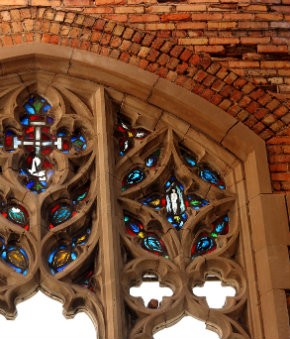Clutter buster: A church clears a path
Yes, we all know that the church is not a building or a steeple. Yet I believe that a church building is often an outward and visible sign of a congregation’s spiritual condition. I learned this during my pastorate at Saints and Sinners (not its real name), when I spent more time on property concerns than I had ever imagined possible. Like many city congregations, Saints and Sinners is getting smaller and smaller and losing ground in the struggle to maintain a large aging building. As one colleague put it, “A lot of us are one furnace failure away from closing.”
When I first walked into Saints and Sinners, I knew that I was in a worship space cherished by church members. The large brick structure was rebuilt after a fire in the late 1930s. It’s a handsome building trimmed in peach marble, with a steep slate roof rising to a steeple topped with a cross. On one corner, oak doors decorated with intricate wrought-iron hinges open onto stairs leading up to the narthex. Light filtered through blue and red stained-glass windows and rested on oak pews and a pulpit of elaborately carved wood.
Even here, though, I saw signs of decline. The altar was covered by a crumpled altar cloth under scratched Plexiglas. A three-quarter-sized plaster Jesus stood with eyes downcast and arms outstretched; on his right hand, three fingers were broken off. The dull red carpet was threadbare in places; when we replaced it we discovered that it was more than 50 years old. Near the entrance was a deep scorch mark in the shape of an iron, probably left by someone trying to remove wax from the carpet.





